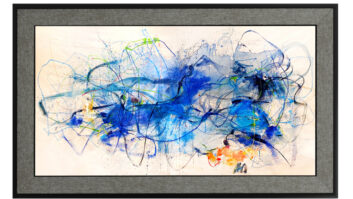BENICIA, CALIF. — NHT says it will change with the times.
By next January, the company hopes to replace the rest of its non-custom speaker selection to complement this month’s shipment of the new Super Audio line. When the changeover is complete, NHT will have pared its selection to about 18 models, split between two series with less price-point overlap than in the company’s current lineup. The current selection of about 30 models is divided into three series.
The company will also reduce its selection of towers to about three from about seven and make its next speakers more stylish and less angular. In addition, new woofer technologies in the next round of speakers will cut cabinet volume and thus trim NHT-hallmark cabinet depths, which in some cases run 2 to 3 feet to allow for narrow front baffles while delivering deep bass, said VP/GM Chris Byrne.
In perhaps the biggest change in NHT’s philosophy, the company will no longer offer one series of home theater speakers and a separate series for music listeners. For its January launches, the company will “develop speakers for [use with] all sources,” Byrne said. The company currently offers the Home Theater series, Music series and Super Audio series (which replaces the Performance series).
Current Home Theater series towers feature a video mode that bumps up the bass and activates reduced-level rear drivers to increase spaciousness and slightly blur the image. In marketing the design, the company has said the blurring helps blend the sound of the center channel with the sound of the left-right speakers. The company has also said the blurring helps reduce localization, which could be distracting to movie viewers because many sounds accompanying an on-screen image would be localizable to points off screen.
Despite the benefits, Byrne said, the feature has become less relevant as the market changed, few people have used it, and it adds “significant” cost to a speaker system.
“The idea was developed initially when the average TV was much smaller and speakers placed further away from the system, which contributed in large part to “cognitive dissonance,” he explained. “As prices have come down in larger screens and consumers place the speakers close to some sort of furniture holding the TV, it has become less relevant.”
On top of that, he said, “We have discovered that consumers rarely use the feature; it seems to be more set and forget, and our research showed that was typically in the audio mode.” NHT believes “it has to do with the preference for music when judging loudspeakers for an entertainment system.”
“What we had was fundamentally developed in 1990-1994, though with new iterations,” said Byrne, who co-founded the brand in 1986 and returned to the company in January after leaving at the end of 1997. “It has been fundamentally the same approach, and the market has moved on, even from a style standpoint.”
Cabinet depths, for example, will be less deep “because everything else is getting flatter,” including TVs, he said. “Black laminate was good for its time, but there has been a style revolution in audio as well as in other home products, so we’re using an outside industrial design group to supplement in-house design for our next products. We know we can do the sonic part of it ourself.”
There will be fewer towers, he continued, because as consumers move into multichannel music and movie soundtracks, multiple towers in a media room “are less appealing.” On top of that, “more people are putting speakers in furniture,” in part because custom installers design AV cabinets to accept bookshelf speakers as well as electronics. Byrne, however, said he also finds specialty retailers promoting bookshelf speakers for placement in case goods furniture that they aggressively sell.
“Towers still sell in NATM stores and Best Buy, but at specialty stores, small towers — at best — are selling. Custom installers don’t want towers at all,” he said.
By January, the Music and Home Theater series will be replaced with a single series whose price points will range from about $1,000-$4,000/ pair, complementing the new Super Audio series, which tops out at $1,000/pair. That series is positioned as expanding NHT’s options at prices less than $1,000 and offering high performance for the dollar. It’s not intended, however, for large listening rooms.
They feature black piano-lacquer finish; two are also available in high-gloss white. All feature rounded edges rather than NHT’s traditional squared-off look.
Sometime after the January launches, the Recoton company will launch speakers equipped with digital signal processing at more than $4,000/pair, Byrne said. The company is still determining how to apply DSP to enhance performance, he said.
Although NHT is evolving with the market, the company isn’t sure whether to join the trend in which American speaker companies team up with electronics companies to offer dual-branded home theater solutions or single-branded solutions under the speaker company’s name.
“We’re talking to manufacturers about home theater in a box,” Byrne said. “But how much of it is price-point-based, and how much is convenience-based?” The issue, he said, is whether step-up solutions priced at $1,000 and up will sell as well as the $599-$799 systems that have dominated sales. At the higher price points, he said, “I don’t know if it’s the same customer.”
As for teaming up with an electronics supplier for dual-branded two-channel shelf systems, he said an alliance doesn’t make much sense for the company because of its distribution.
“Few of our specialty dealers offer shelf systems. I think this works only where [two suppliers] have large dealers in common.”













